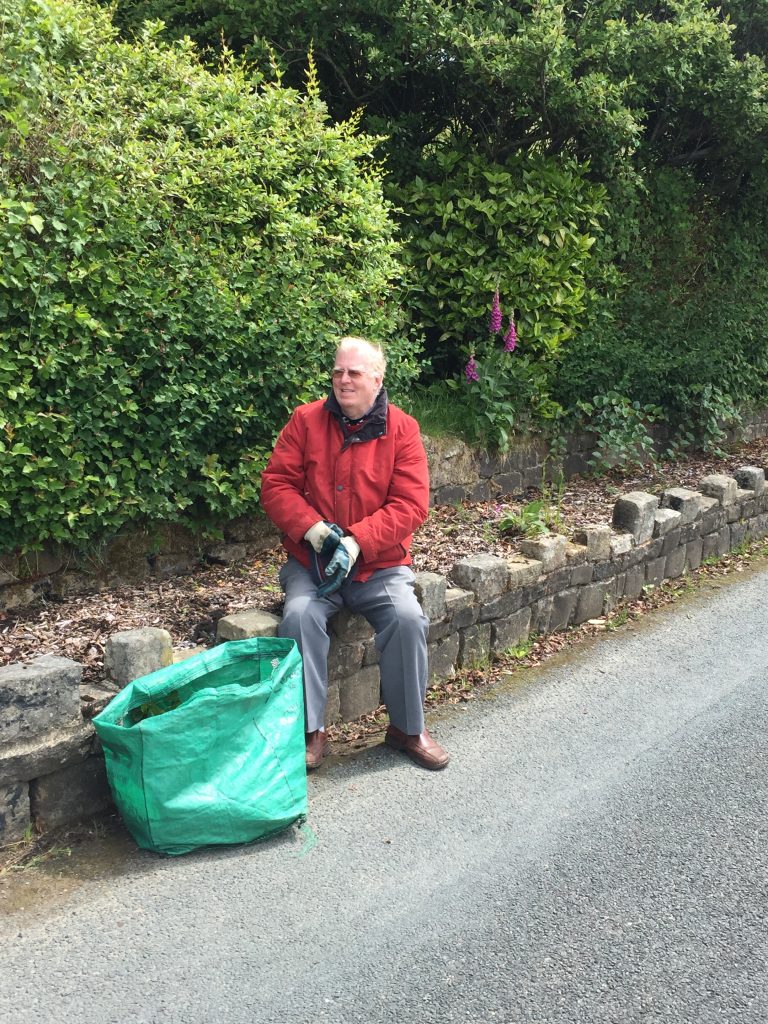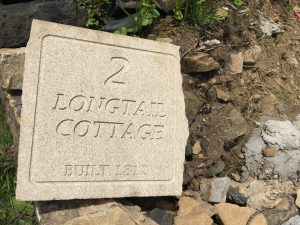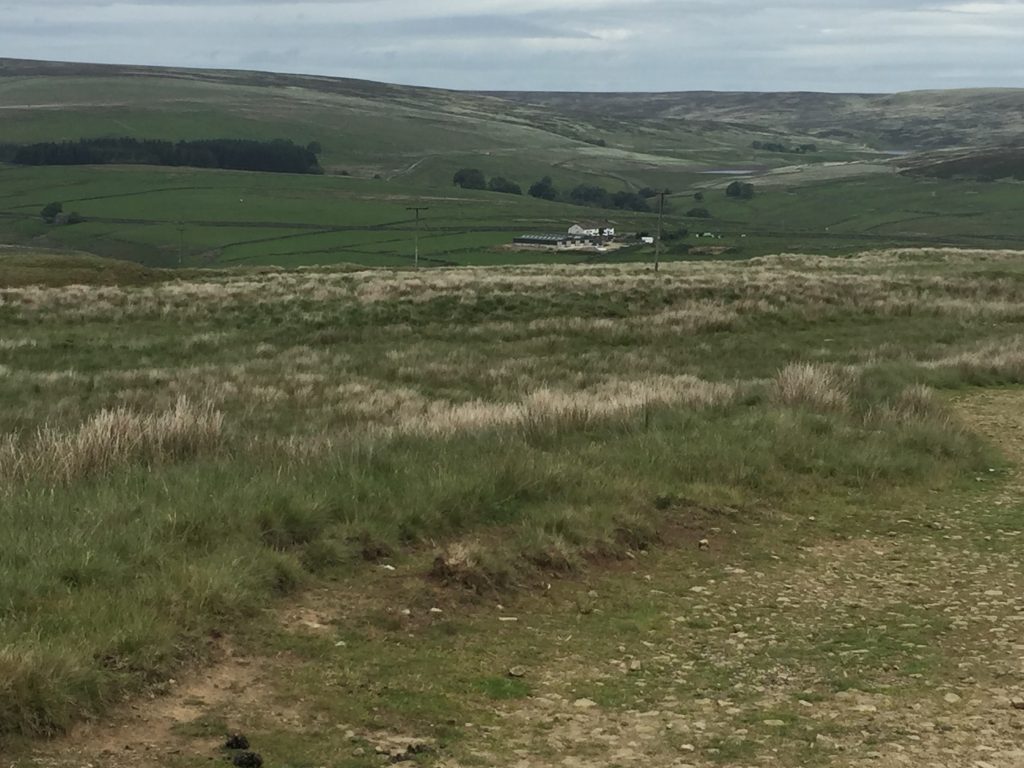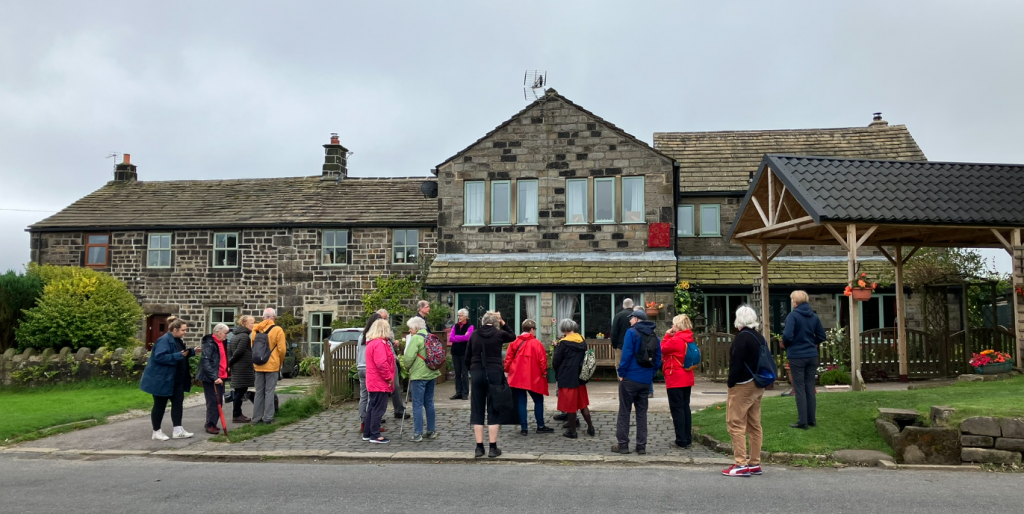Longtail

This morning I went in search of Longtail. Well, actually I just wanted a good reason to take another walk along Edge Lane, having enjoyed my first two walks along the lane. In 1881 The Pack Horse Inn was the scene of an altercation between a group of thugs and the landlord, my ancestor, John Wolfenden. When the vandals reappeared at the inn the following day two policemen were summoned from Hebden Bridge and during a scuffle, as they were being marched back to Hebden, some of the men broke free and headed off in the direction of Longtail Beer House.

So today I went to find it. I knew that it is now a private residence and as I drew close to the building set above the road with a panoramic view of the Upper Colden valley I was delighted to see that one of the residents was doing some gardening by the roadside. We chatted and I learned that the building is now divided into three cottages. I told him of my mission and he recalled the story of a murder at Longtail beer house, but I’ve not been able to find any reference to this yet.


I carried on along the lane, passing Spink House where my ancestor John Sunderland lived, and the former workhouse and soon I passed through the gate at the end of the car track and found myself on open moorland. There’s a grand view of Gorple reservoir and the three Walshaw Dean reservoirs.

The Pack Horse Inn was the only building in sight in any direction. I sat on a grassy bank to admire the view and as I did so I soon began to be the object of attention of several curlews who obviously wanted me out of the way. I was able to take a nice video of them swirling about my head, making a call just like a car alarm. For a minute two birds were calling in unison and I felt as though I was being treated to surround sound. I wondered if the track was made when the reservoirs were constructed or if it is an ancient track over the moors but my phone didn’t get any signal way out here so I couldn’t check the historic maps. (I later found that there was some evidence of the track marked on the 1851 map). So I headed back along the stoney track passing some friendly sheep. I even caught a glimpse of an owl, sitting atop a gatepost, eying me suspiciously.
On the way up I’d called in at May’s farm shop which I hadn’t been in before. An elderly lady – May? – related the story of her mother babysitting for a couple on a farm close by as a young teen and then the farmer killed his wife, but again, I can’t any reference to that in the local papers of the time. On my way back I called in at the shop and purchased a pasty to take home.
Digging up more information online later that day was I surprised to learn that Longtail had once been the residence of a lady who wrote Helen of Four Gates. Oo, that might be fun to read, I thought, especially if it’s set in this area. But before I could order the book online I found that it had been made into a silent movie in 1920, and that the author, Ethel Carnie Holdsworth, had been an important working class social activist and feminist.

Her story had even been the subject of someone’s Phd thesis, available to read online. Born in Lancashire, she began work at the cotton mill aged eleven as a part-timer, working full-time from the age of thirteen. In an article for The Woman Worker (which she edited for six months in 1909) she described the factory worker as ‘practically a beggar and a slave’, declaring all workers ‘dependent on the whims of a master class.’ Her first publications were poems, collected in Rhymes from the Factory in 1907. Two further volumes followed: Songs of a Factory Girl (1911) and Voices of Womanhood (1914). All were produced under difficult circumstances – between serving customers at the draper’s shop her mother had taken in Little Harwood, between lectures at Owens College, Manchester, where she registered as a non-degree student from 1911 to 1913, and between the creative writing classes she taught at Bebel House in 1913 and 1914. What a coincidence that my daughter attended Owens College at Manchester Uni too! She lived at Longtail from 1919-1921.
But the story doesn’t stop there. The director of the film was Cecil Hepworth one of the founding pioneers of the British film industry. He created the first film adaptation of Alice in Wonderland. By 1910, Hepworth was also the inventor of Vivaphone, an early sound on disk system for adding sound to motion pictures and he was one of the first people to recognize the value of film stars, both human and animal. His Rescued by Rover, 1905 had a collie dog in the title role and was a huge financial success. Following the international success in 1919 of Alf’s Button Hepworth’s company went public but failed to raise the necessary capital and the company went bankrupt. All of the original film negatives in Hepworth’s possession were melted down by the receiver in order to sell the silver, and his feature films have been considered lost for many decades. However, an original 35mm. print of his 1920 film Helen of Four Gates was located in a film archive in Montreal, Canada in 2008 by film maker Nick Wilding. Back in 1920, cinema-goers packed into the Co-op Hall in Hebden Bridge, eager to see a new film; a harrowing, heart-rending story shot in the countryside around their town. After a little detective work, Nick discovered it was Ethel Carnie Holdsworth who persuaded Cecil Hepworth to use Hebden Bridge as a location. There are scenes of the countryside around the town, including the beauty spot of Lumb Falls.
“She took Hepworth up the moor,” says Nick. “He writes in his autobiography about being taken there. He had a good look around and decided where he was going to film.” In June 2010 the film, with live music as was originally intended was shown at the Hebden bridge Picture House, directly across the road from where I write, as part of the town’s celebration of the 500th anniversary of the town’s pack horse bridge – it’s first public showing in 90 years. So, my story both begins and ends with a Pack Horse!
On September 16, 2023 I attended the unveiling of a Blue Plaque commemorating the hoouse at Slack Bottom where Ethel had lived after she sold Longtail. The entire movie is available to watch: https://player.bfi.org.uk/free/film/watch-helen-of-four-gates-1920-online
Someone has also a 4 minute movie about her life
All were produced under difficult circumstances – between serving customers at the draper’s shop her mother had taken in Little Harwood, between lectures at Owens College, Manchester, where she registered as a non-degree student from 1911 to 1913, and between the creative writing classes she taught at Bebel House in 1913 and 1914. She lived at Longtail 1919-1921.


Nick Wilding here. I enjoy that walk too. I enjoyed reading about it.
I think that it is worth mentioning that the only reason that Ethel was able to buy Longtail was because of the royalties she had earned from the sales of her novel ‘Helen of Four Gates’.
Later on, she was able to buy 29, Slack Top, Heptonstall with the money she earned from Cecil Hepworth’s filming of it and last year we unveiled a blue plaque to her there.
Thank you for including a reference to me in your story. I just want to tell you that a lovely guy in Japan called Chris Lynch actually discovered that ‘Helen of Four Gates’ was in the Cinematheque Quebecoise’ in Montreal. This enabled me to find it and I do not want to take the credit. Together with Fred Dibnah’s widow Sheila, I did play a role in fund-raising the creation of a reel of it to bring it to the British Film Institute in Britain and they were kind enough to let us premiere it in 2010 at Hebden Bridge Picture House. We put on a show called ‘Fred Dibnah Night’ in 2008 to a full cinema with extracts of filming I had done of Fred over ten years to fund it and Sheila was good enough to donate all her fee to the project. We also had to find the copyright holder of the film and were able thankfully to contact Cecil Hepworth’s daughter, who gave us her permission, but many thanks for writing such an interesting story. I knew nothing about the murder.